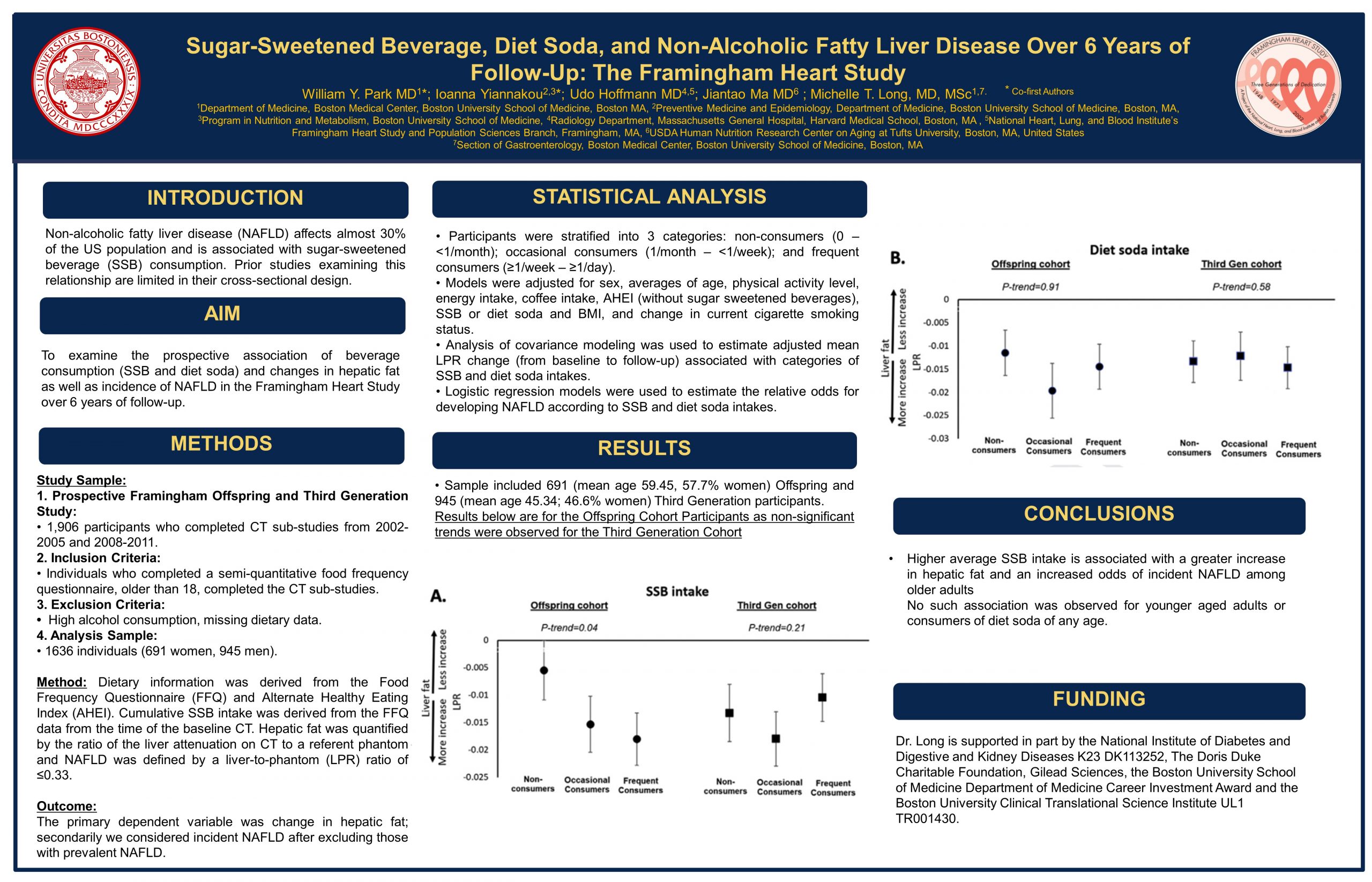Research Week 2022 – William Park, MD

Sugar-sweetened beverage, Diet soda, and Non-alcoholic Fatty Liver Disease Over 6 Years of Follow-Up: The Framingham Heart Study
Authors: William Y. Park M.D.*; Ioanna Yiannakou RD, MS.*; Udo Hoffmann M.D.; Jiantao Ma M.D.; Michelle T. Long, MD, MSc
*Co-first authors
Background: Non-alcoholic fatty liver disease (NAFLD) affects almost 30% of the US population and is associated with sugar-sweetened beverage (SSB) consumption. Prior studies examining this relationship are limited in their cross-sectional design. We aim to examine the prospective association of beverage consumption (SSB and diet soda) and changes in hepatic fat as well as incidence of NAFLD in the Framingham Heart Study.
Methods: We conducted a prospective observation study of participants from the Framingham Heart Study Third Generation and Offspring cohorts (n=1906) who participated in the computed tomography sub-studies from 2002-2005 and 2008-2011. Eligible participants were classified according to SSB or diet soda consumption, derived from a semi-quantitative food frequency questionnaire. Exclusion criteria included those with high alcohol consumption or who lacked dietary data. Participants were stratified into 3 consumption categories: non-consumers (0–<1/month), occasional consumers (1/month–<1/week), and frequent consumers (≥1/week–≥1/day). Hepatic fat was quantified by the ratio of the liver attenuation on CT to a referent phantom and NAFLD was defined by a liver-to-phantom ratio of ≤0.33. The primary dependent variable was change in hepatic fat; secondarily we considered incident NAFLD after excluding those with prevalent NAFLD (n=155). We also tested for an interaction by cohort.
Results: The sample included 691 (mean age 59.45, 57.7% women) Offspring and 945 (mean age 45.34; 46.6% women) Third Generation participants. On average, liver fat increased between CT scans for all participants, regardless of SSB consumption category. For Offspring cohort participants, after adjusting for various covariates including change in BMI, frequent consumers of SSB had a more adverse change in liver fat compared to non-consumers. Frequent SSB consumers had a 2.53 times increased odds of incident NAFLD compared to non-consumers (95%CI 1.36-4.7;p =0.004). On the other hand, frequent diet-soda consumers had no significant increased odds of incident NAFLD compared to non-consumers (95%CI 0.59-1.61; p=0.78). There was no association between SSB use or diet soda use and change in liver fat or incident NAFLD in the younger aged Third Generation cohort participants.
Conclusion: Higher average SSB intake is associated with a greater increase in hepatic fat and an increased odds of incident NAFLD among older adults whereas no such association was observed for younger aged adults or consumers of diet soda of any age.